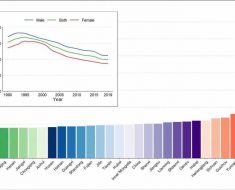
Through the development of new technology, University of Minnesota researchers have developed a method that allows scientists to understand how a fruit fly’s brain responds to seeing color. Prior to this, being able to determine how a brain responds to color was limited to humans and animals with slower visual systems. A fruit fly, when compared to a human, has a visual system that is five times faster. Some predatory insects see ten times faster than humans.
“If we can understand how seeing color affects the brain, we will be able to better understand how different animals react to certain stimuli,” said Trevor Wardill, the study’s lead author and assistant professor in the College of Biological Sciences. “In doing so, we will know what interests them most, how it impacts their behavior, and what advantages different color sensitivities may give to an individual’s or a species’ survival.”
Published in Scientific Reports, Wardill and Rachel Feord—a University of Cambridge Ph.D. student in Wardill’s laboratory—developed the new approach by:
- developing a filter-based optics system for a two-photon microscope that divided the visible spectrum in a way that allowed the fruit flies to see light without interfering with the brain imaging by partnering Semrock, an optical filter manufacturer;
- testing high-speed projectors and screen materials to identify a screen that maintained a near-constant brightness of each wavelength band at all points of the screen from UV to red light; and
- producing transgenic fly strains of the fruit fly (Drosophila melanogaster) that differed in one or more of the following ways: screening pigment density, photoreceptor function and calcium activity indicator.
Through this, researchers developed a method that allows for a fly to be presented with more than 50 different types of high intensity wavelength bands across the visual spectrum, while allowing for simultaneous, uninterrupted brain imaging with maximum sensitivity (i.e., able to collect photons for the full imaging duty cycle) when compared to previous methods. As a result of this testing, they found strain-specific sensitivities to colors among the fruit flies, with orange-eyed flies exhibiting a decreased sensitivity to light in the blue range and increased sensitivity in the green range when compared to their red-eyed counterparts.
Source: Read Full Article





